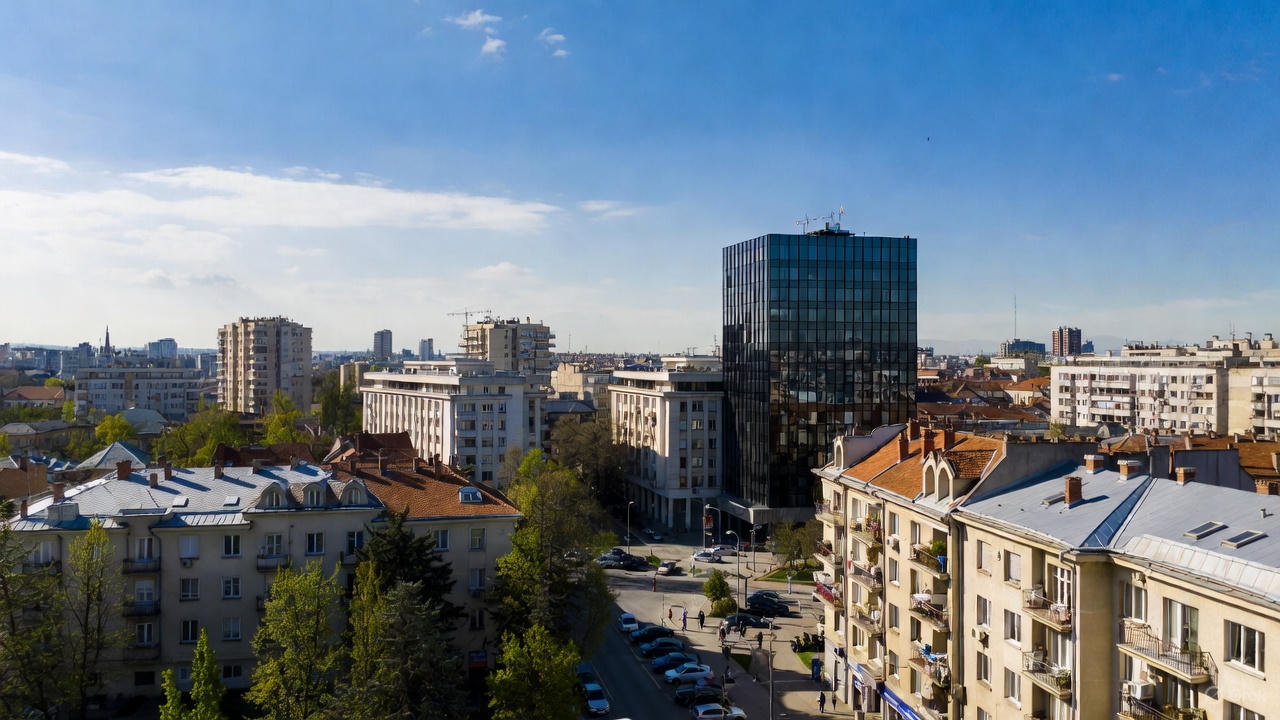Bulgarian Labor Migration: Scale, Destinations, Dynamics, and Patterns of Emigrant Behavior

Bulgaria, as one of the Central and Eastern European countries that joined the European Union in 2007, is experiencing significant migration processes. Labor migration has become a key factor in the country’s demographic, economic, and social changes. According to estimates from international organizations, a substantial portion of the Bulgarian population lives abroad, impacting the labor market, pension system, and overall development of Bulgaria. This article is based on data from the UN, Eurostat, OECD, World Bank, and academic studies, analyzing the scale of emigration (as a percentage of the population), the most popular destination countries, changes following Bulgaria’s EU accession, the rate of migrant returns, and the dominant patterns of migration behavior. The goal is to provide a comprehensive overview of the phenomenon, supported by empirical data, with a focus on the 2022–2024 period.
The general context of migration in Bulgaria was shaped by the economic transformation of the 1990s, globalization, and European integration. The country is losing population due to low birth rates and high emigration: as of the end of 2024, the population stands at approximately 6.44 million people. Migration not only reduces the workforce but also creates diasporas that send remittances, which constitute an important share of GDP. Analyzing these processes helps understand whether migration is a temporary phenomenon or a permanent loss of human capital.
Scale of Emigration: How Many Bulgarians Have Left the Country?
Estimates of the number of Bulgarians abroad vary depending on the counting methodology. According to UN data (UNDESA, estimate for 2023–2024), approximately 1,252,234 individuals who identify as Bulgarians or were born in Bulgaria live outside the country. This includes all categories: permanent emigrants, temporary workers, students, and diaspora members. With Bulgaria’s population at 6.44 million, this amounts to about 19.5% of the population living abroad. This figure encompasses not only labor migrants but also historical diasporas, such as those in Turkey or the USA, as well as unregistered individuals.
Another estimate, based on Eurostat data and expert assessments, focuses solely on EU countries and provides a lower figure—around 900,000 Bulgarians, or 13–14% of Bulgaria’s population. The difference is due to methodological variations: UNDESA uses criteria of place of birth or self-identification, while Eurostat relies on citizenship and registration in EU countries. For example, many Bulgarians in the United Kingdom (before and after Brexit) or in non-European countries are not included in European statistics. Additionally, unregistered migrants (e.g., those working informally) underestimate Eurostat figures.
These 19.5% represent not just labor migrants but everyone who has left. Focusing on working-age individuals (20–64 years), the share of mobile Bulgarians in the EU reaches 13.3% according to 2018–2019 data, with a trend toward growth. Thus, Bulgaria is one of the leaders in emigration levels within the EU, surpassed only by Romania and Croatia. This phenomenon, known as “brain drain” (loss of skilled professionals) and “muscle drain” (loss of manual labor), leads to shortages of specialists in IT, medicine, and construction at home.
Most Popular Countries for Labor Migration
The directions of Bulgarian migration have evolved over time. Historically, Turkey (ethnic Bulgarians) and the USA were important, but after 2007, EU countries dominate due to freedom of movement.
The largest community is in Germany: estimates for 2022–2024 put it at over 300–338 thousand Bulgarians. This is confirmed by Prague Process and OECD data. Germany attracts both highly qualified specialists (IT, engineering) and low-skilled workers (construction, logistics). In 2022–2023, about 45% of Bulgarians who emigrated to OECD countries chose Germany.
Second place goes to Spain, Italy, and Greece—countries with historical ties and large communities. In Spain, Bulgarians work in agriculture, tourism, and elderly care; in Italy—in construction and domestic services; in Greece—in seasonal jobs. Estimates: tens of thousands in each, totaling over 200,000.
The United Kingdom, despite Brexit, remains popular: a significant diaspora (around 100–150 thousand) persists due to prior flows. Other countries—Belgium, the Netherlands, Austria—attract medium-skilled workers. OECD International Migration Outlook 2024 data show Germany leading by a wide margin, while Southern Europe is for seasonal migration.
Factors influencing choice: salaries (twice as high in Germany as in Bulgaria), language (English in the UK), diaspora networks. Youth choose Western Europe for careers; older individuals choose the South for seasonal earnings.
Changes After Bulgaria’s EU Accession in 2007
EU accession acted as a catalyst for migration. Before 2007, Bulgarian citizens faced visa barriers; afterward, they gained freedom of movement.
Data show a sharp increase: net migration balance rose from ~228 people in 2006 to ~25,044 in 2012 (CEEMR study). Annual emigration flows grew tenfold in the first years. Eurostat records that the share of mobile working-age Bulgarians doubled in the first decade: from less than 7% to 13.3% in 2018–2019.
Reasons: access to EU labor markets, higher wages, social guarantees. The peak occurred in 2008–2012 (economic crisis in Bulgaria). After 2014, flows stabilized but remain high. COVID-19 temporarily reduced emigration (2020–2021: net migration positive due to returns), but outflows resumed from 2022.
Thus, the EU increased the emigration percentage by 5–10 times depending on the metric, turning Bulgaria into an “exporter” of labor.
Percentage of Labor Migrants Who Return
Returns are a key aspect, but there is no universal figure. Reviews for Eastern Europe estimate 25–40% of emigrants returning within a few years (GNPJE studies).
For Bulgaria: over the 2008–2018 period, out of ~190,000 who left, ~68,000 returned (ratio ~36%). During COVID-19, returns increased (net migration positive in 2020–2021), but many left again. The World Bank notes higher returns among low-skilled workers (during crises) and lower among highly skilled (due to integration).
Factors for non-return: better conditions abroad, families. For return: nostalgia, investments, retirement. Thus, 60–75% stay long-term.
Model of Bulgarian Labor Migration: Earn and Return or Stay Permanently?
The model is mixed, with no single dominant pattern for all.
- “Earn—Return—Invest” Model: Characteristic of 20–30% of returnees. AIEL studies show ~20% of households with returnees invest in business or real estate. Examples: savings from Germany to open a shop in Bulgaria.
- “Leave and Stay” Model: Dominates for the majority, especially in Germany/UK. Integration: jobs, families, citizenship. Large diasporas confirm this (Prague Process).
- Temporary/Cyclical Mobility: Seasonal work in Greece/Spain, returning in winter. COVID revealed vulnerability: returns during crises, re-emigration afterward.
Depends on profile: youth/highly educated—permanent; low-skilled—cyclical; middle-aged—mixed. Overall, long-term emigration prevails (most settle), but returns are significant for the economy (remittances, experience).
Implications and Future Directions
Bulgarian migration involves 19.5% of the population abroad, with Germany as the leader. The EU amplified flows, returns are 25–40%, and the model is mixed with a tilt toward permanence. For Bulgaria, this is a challenge (depopulation) and an opportunity (remittances). Policy should stimulate returns through investments and improved conditions.
Sources: UN DESA, Eurostat, OECD, World Bank, Prague Process, academic reviews.










